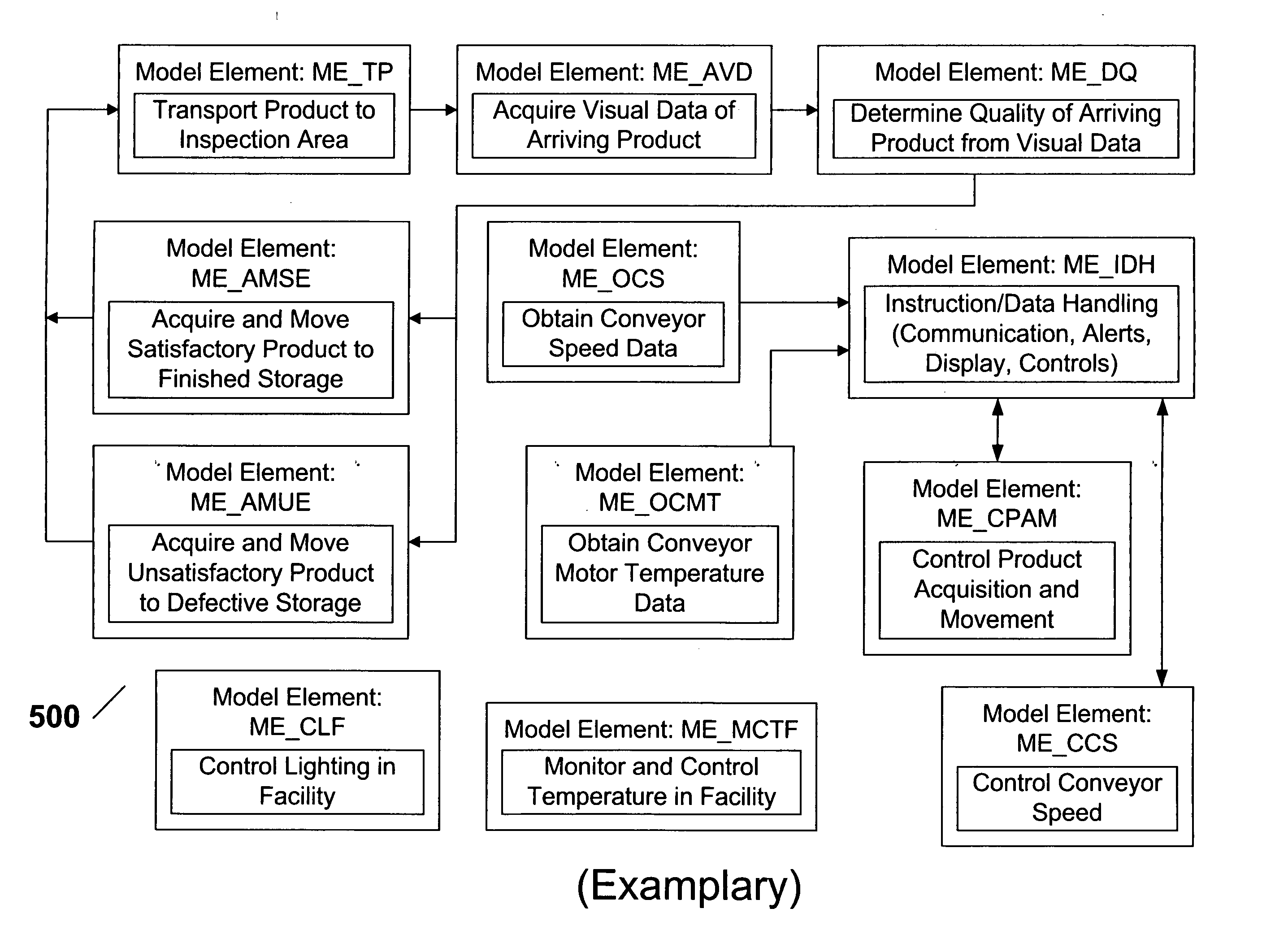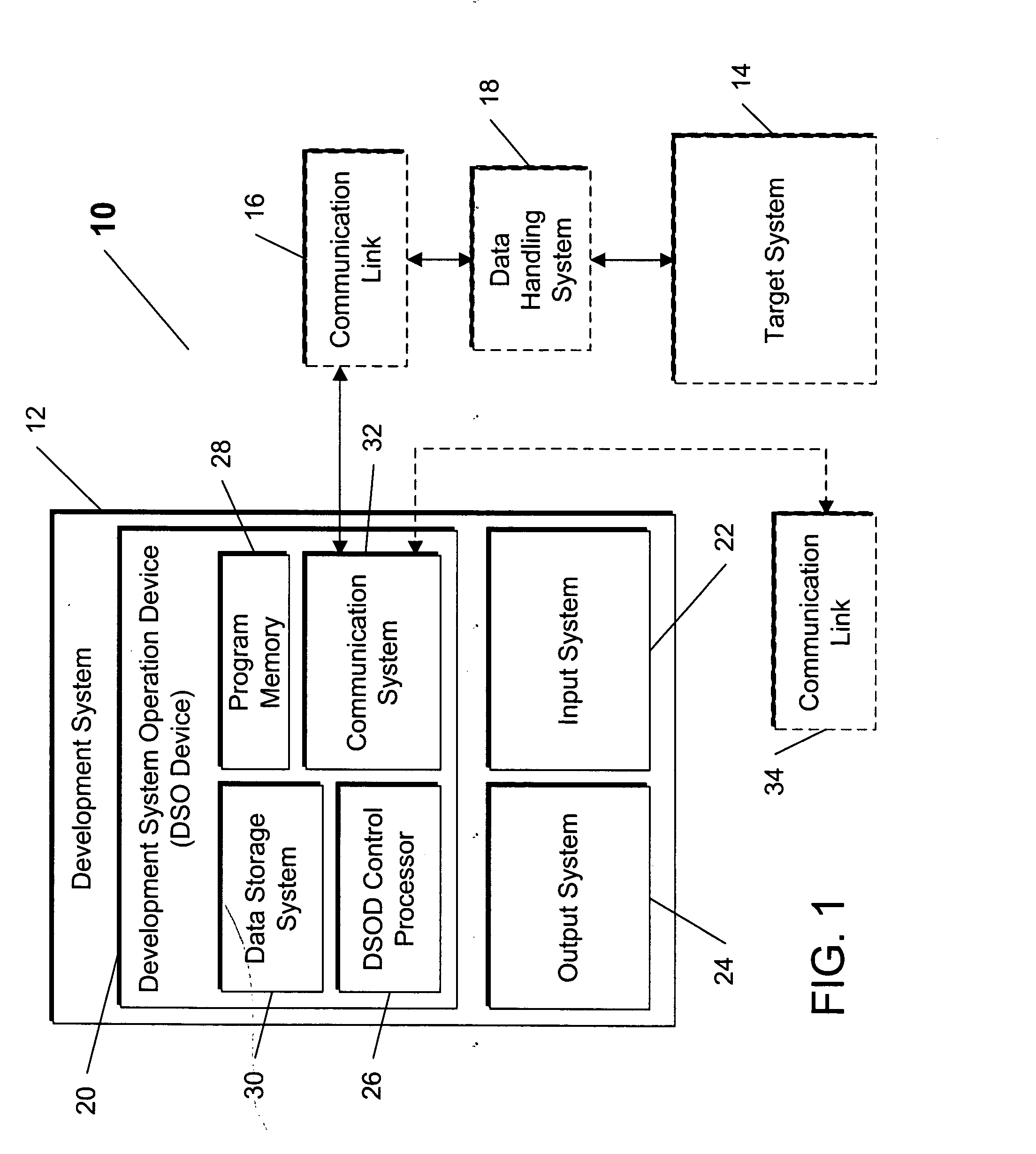System and method for rapid design, prototyping, and implementation of distributed scalable architecture for task control and automation
a task control and automation technology, applied in the field of data processing system for modeling and implementation of scalable distributed systems, can solve the problems of complex industrial applications such as manufacturing process control, multi-component devices, other systems or devices, and the process of design, prototyping and implementation of complex industrial applications is a complex and time-consuming task, and the entire system is often re-designed and re-designed for a great deal of time and resources. , to achieve the effect of rapid and inexpensive design and
- Summary
- Abstract
- Description
- Claims
- Application Information
AI Technical Summary
Benefits of technology
Problems solved by technology
Method used
Image
Examples
first embodiment
[0045] Referring now to FIG. 1, the inventive RDPI system 10 is shown. The key novel features of the RDPI system 10 are embodied in the inventive processes, described in greater detail below in connection with FIGS. 5-7 and 12, that may be implemented in whole or in part as one or more executable programs or other form of data processing tasks. These inventive processes enable the user to fully utilize the previously summarized novel and advantageous features of the RDPI system 10, as well as take advantage of numerous other novel features and options described below in connection with various figures.
[0046] The RDPI system 10 includes a development system 12 for enabling the user to quickly and easily create an operational system model (representative of a previously designed visual system model partitioned into individual model elements and / or model element groups (i.e., “partitions”) intended for assignment to particular target components, as well as the necessary communication l...
second embodiment
[0099] Referring now to FIG. 7, the primary partitioning process is shown as an automated process 400, The process 400 begins at a step 402, where the system 12 retrieves at least one previously developed implementation rule from a group of design rues, installation rules, business rules, that include specific predetermined parameters, ranges, or values of target component attributes, that correspond to attributes of desirable target components for use with the target system being developed. One or more of these rule sets may be previously configured for use with design of particular types or classes of target systems, and may also change over time as design requirements shift. Alternately, the rules may be implemented as expert systems.
[0100] At a step 404, the system 12 opens the target attribute records (such as the attribute record 100 of FIG. 4) for each possible target component, preferably opening the category(ies) of attributes matching the rule(s) opened at the step 204. At...
PUM
 Login to View More
Login to View More Abstract
Description
Claims
Application Information
 Login to View More
Login to View More - R&D
- Intellectual Property
- Life Sciences
- Materials
- Tech Scout
- Unparalleled Data Quality
- Higher Quality Content
- 60% Fewer Hallucinations
Browse by: Latest US Patents, China's latest patents, Technical Efficacy Thesaurus, Application Domain, Technology Topic, Popular Technical Reports.
© 2025 PatSnap. All rights reserved.Legal|Privacy policy|Modern Slavery Act Transparency Statement|Sitemap|About US| Contact US: help@patsnap.com



